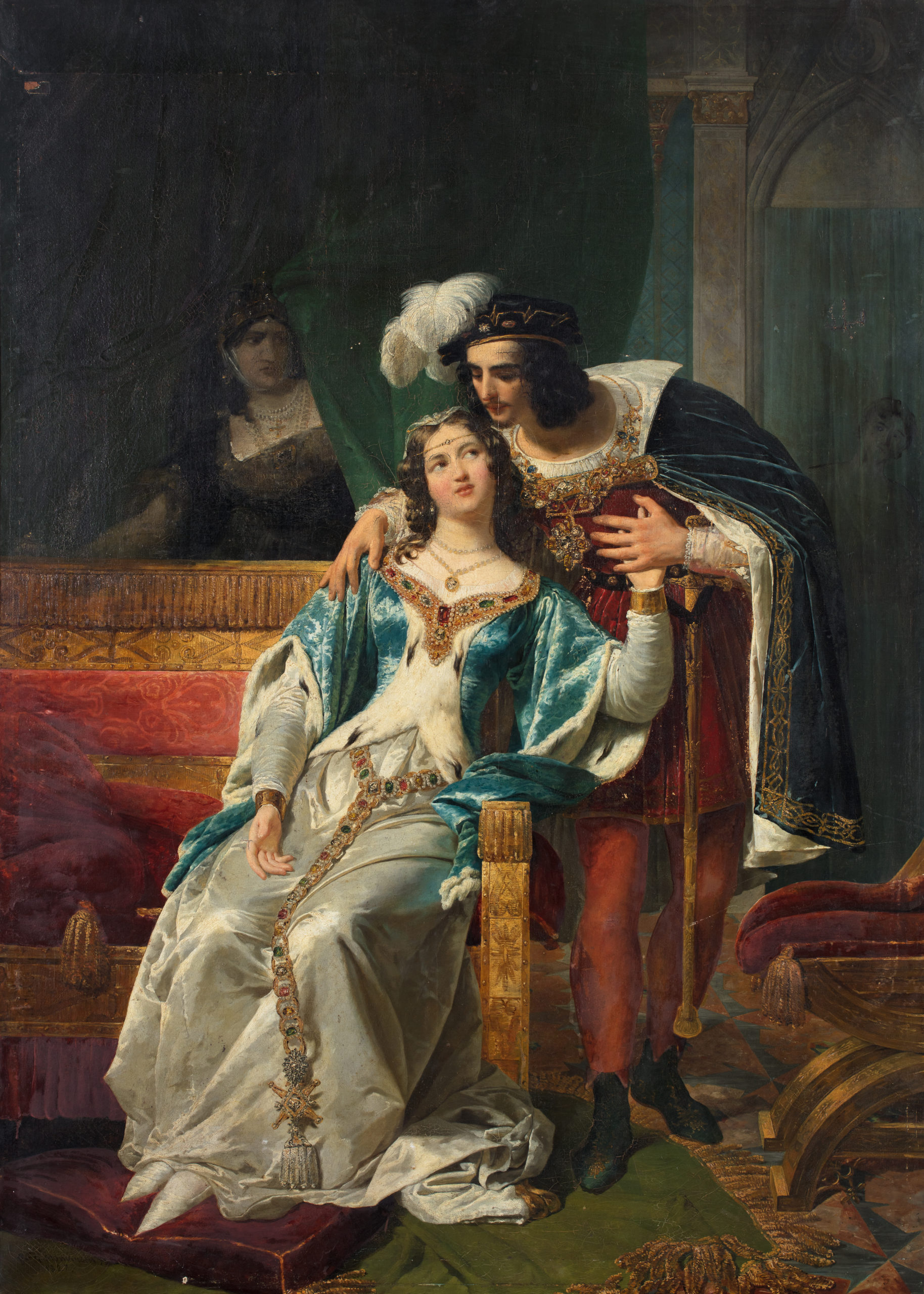
Visible light photograph
Author: Raymond Quinsac MONVOISIN
Dated: 1827
Size without frame: 100 x 140 cm
Technique: Oil on canvas
Provenance: Musée des Beaux-Arts d’Orléans
This painting by Raymond Quinsac Monvoisin, from the collections of the Musée des Beaux-Arts d’Orléans, depicts King Henry II of England with his favorite mistress, Rosamund Clifford.
Infrared reflectography, carried out with the Apollo camera, reveals a very detailed layout of the entire composition as well as a squaring, suggesting a careful preliminary study.
Executed with a dry point, a perspective construction drawing of architectural and structural elements is clearly visible on the floor tiles and in the background. Certain lines reveal the use of a compass, ruler or a square edge, while others are executed freehand as if it were a sketch with traces of trial and error. The outlines of characters are nervous, drawn with discontinuous lines, while the face features appear softer, probably executed with a brush or by using a ‘wet’ material.
Several pentimenti are visible: the most significant being the scene in the background. Initially closed on the right side by a shadowy figure observing the scene, hidden behind a balustrade and a column with capital, the artist later changed his composition by placing another figure in the background with a more central position. Meant to be completely invisible in the final phase, the character on the right appears like a ghostly vision following alterations of the painted layer
In the background, architectures were rearranged differently and replaced in the painted phase by a large green curtain.
It is also be noted that the patterns on the cushions on the left of the picture were not foreseen at the stage of the underlying drawing, while other ornamental patterns (such as on the back of the bench) were specified in detail. Minor changes are also visible in the orientation of the left hand and feet of Henry, as well as Rosamund’s right hand.
From the false color infrared image (FCI), we can assume the use of certain pigments: the blue cloak worn by Rosamund is made of natural azurite and lead white, purplish on the FCI image. Henry II’s cloak is made of azurite, probably with added black. Vermilion on Henry II’s cushions and shoes appears red. The background’s blue is probably composed of a layer of azurite, while the large curtain is made with verdigris. The legs and armrest of the bench are made of yellow ochre. The carpet contains malachite with yellow added. Finally, the skin tones are executed with a pink layer of vermilion and white.
Image and text credits to Arcanes
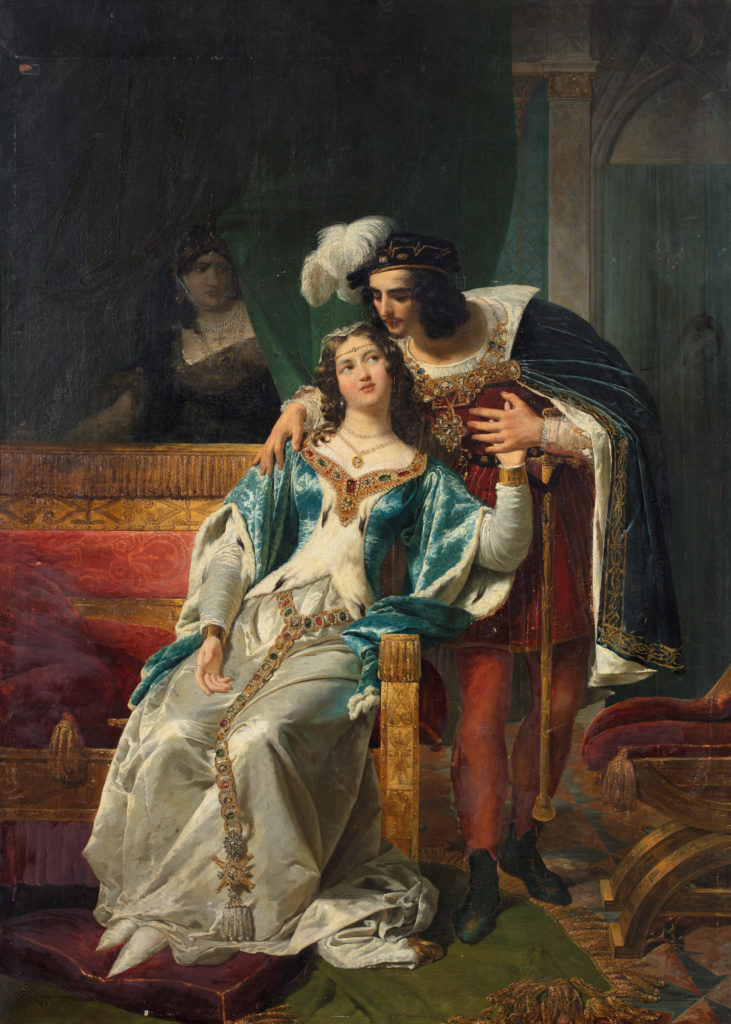
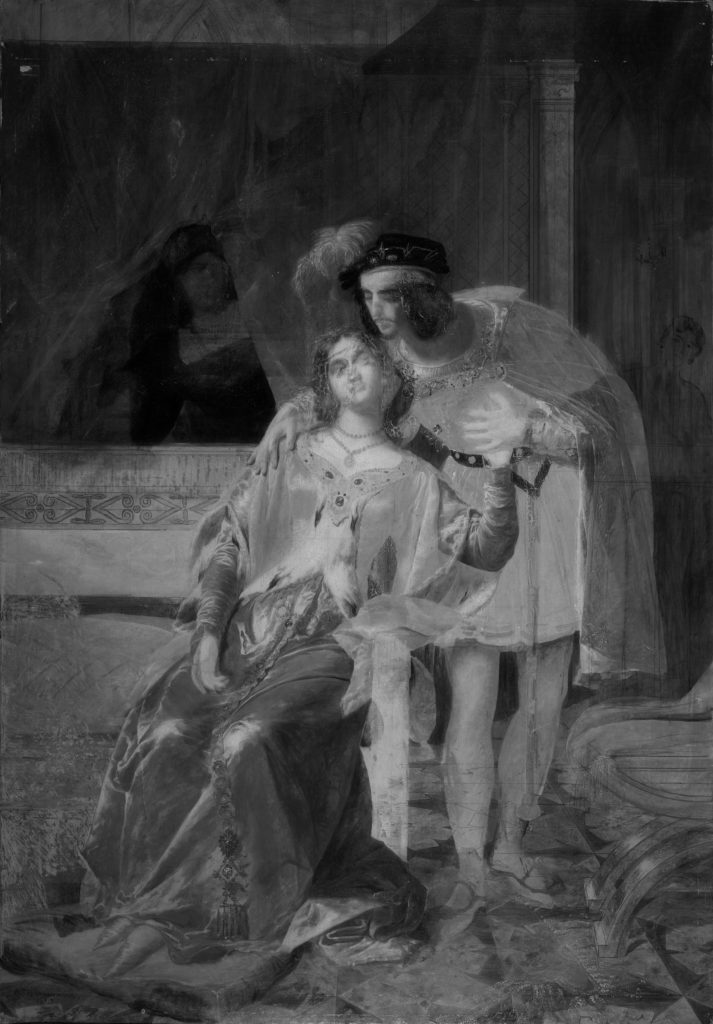
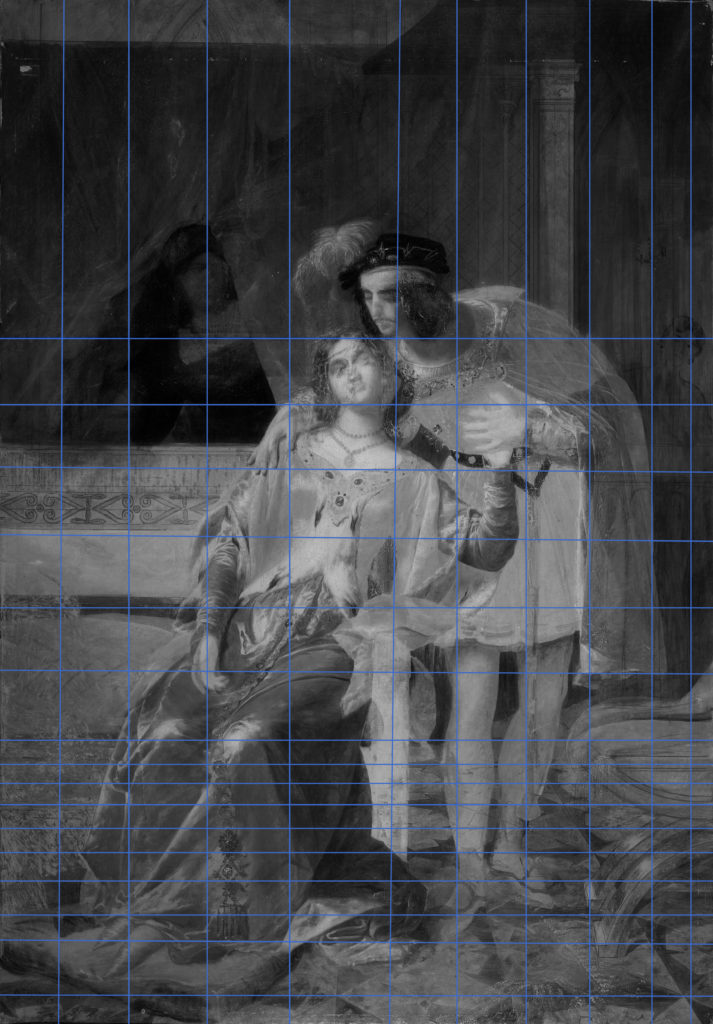
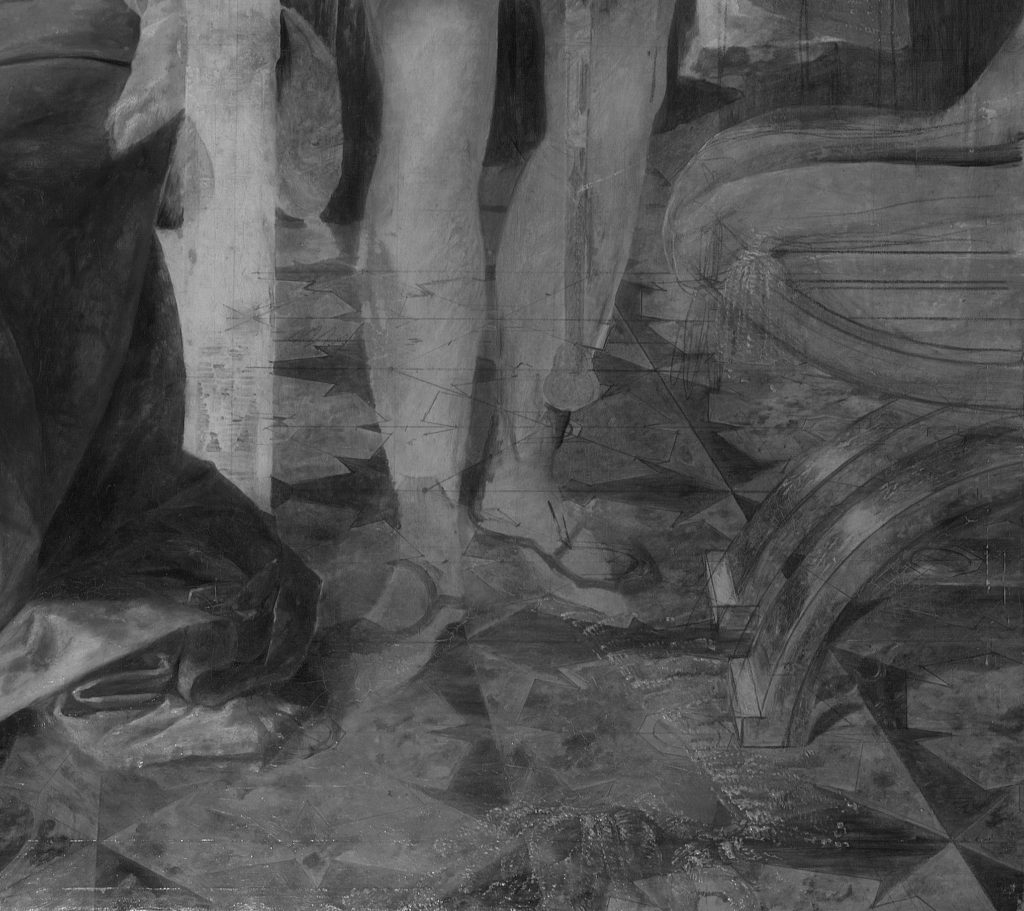
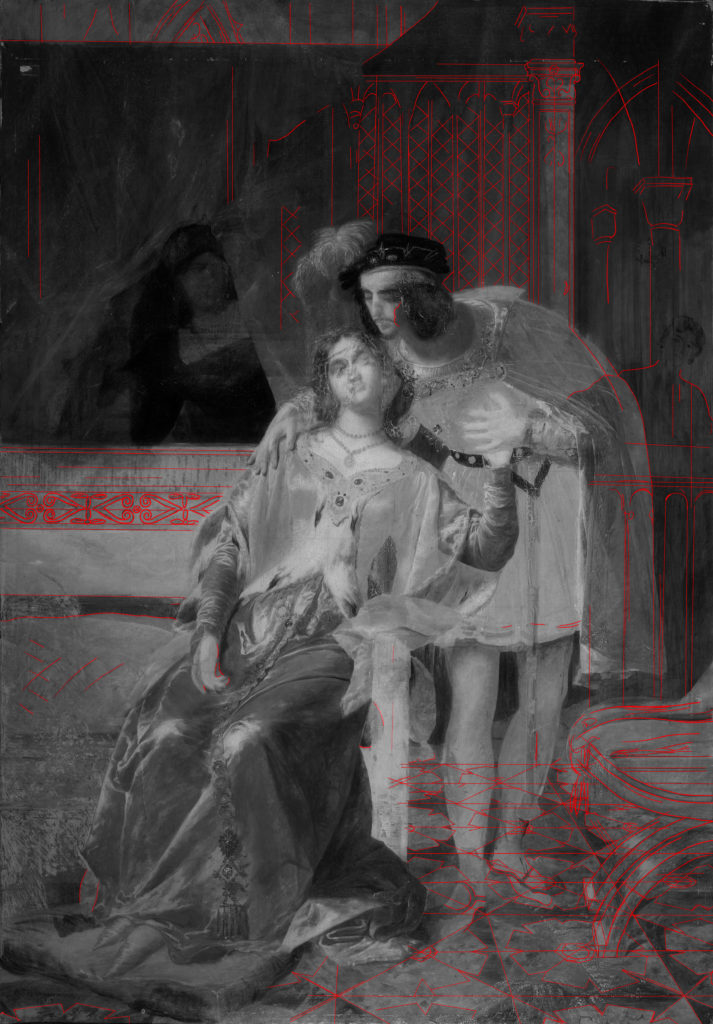
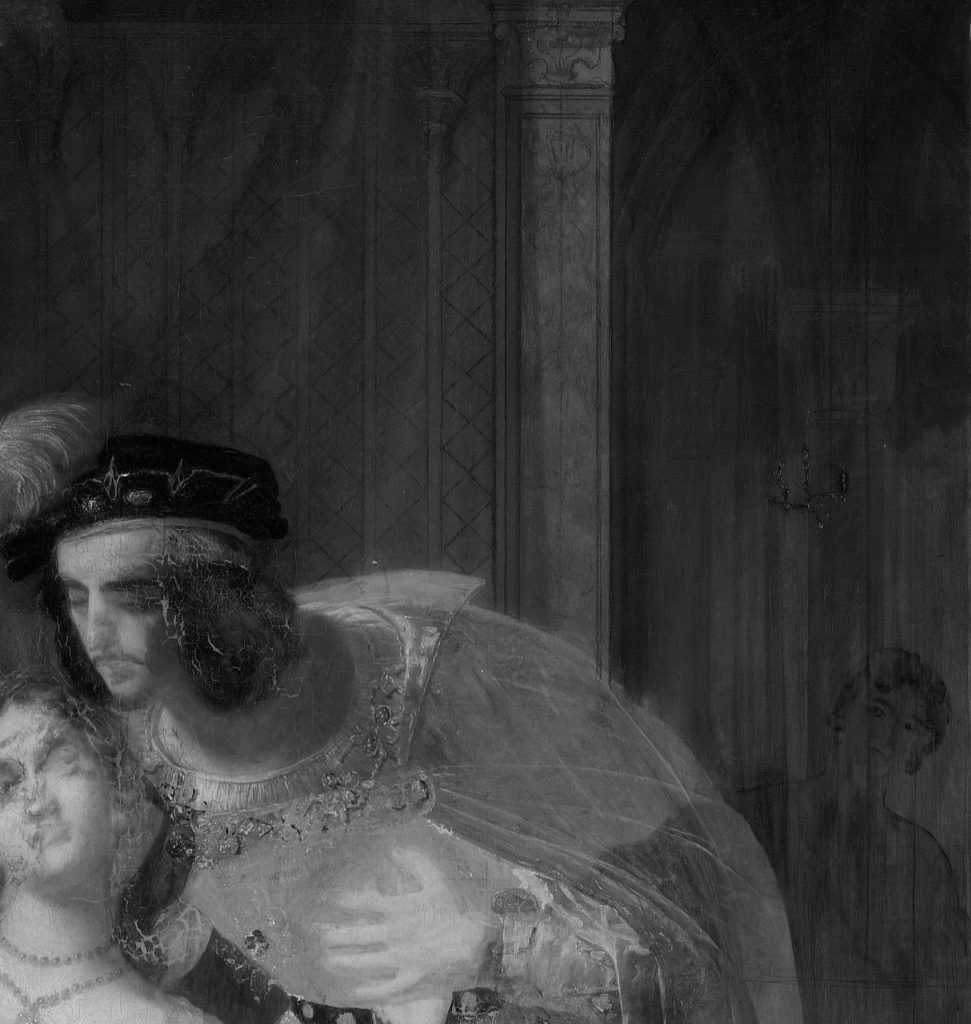
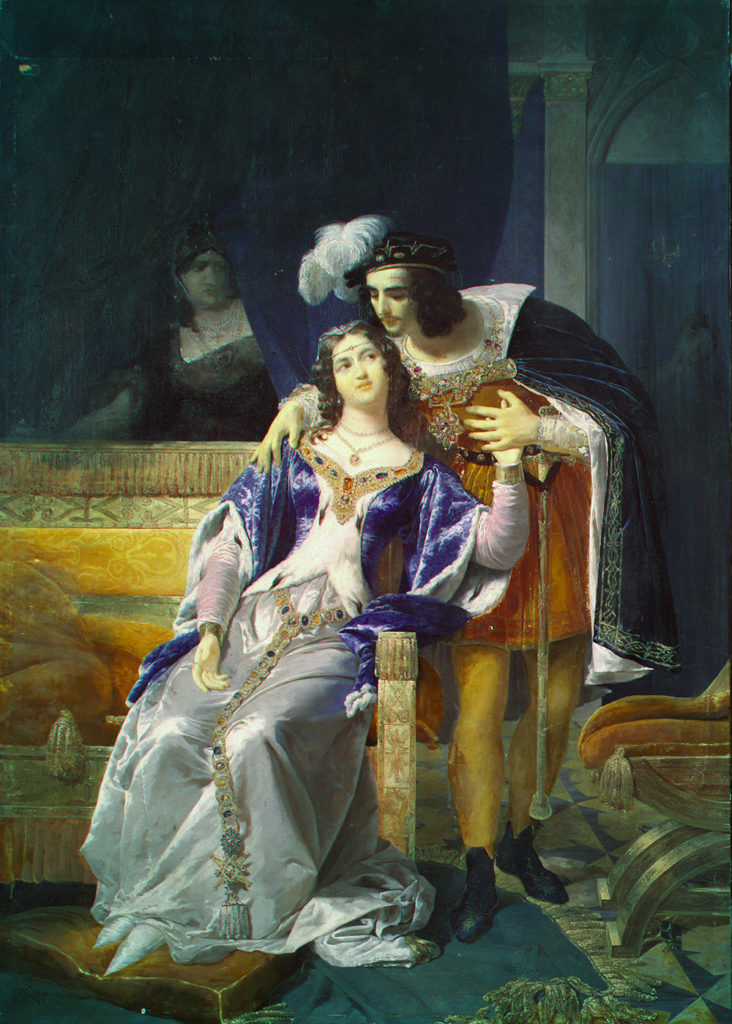
Image and text credits to Arcanes. Infrared reflectograms in this case study were taken by Apollo from Opus. Please get in touch via the enquiry form below to find out more.